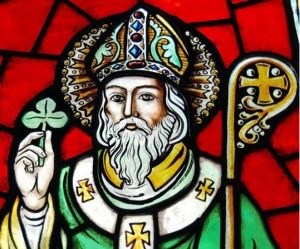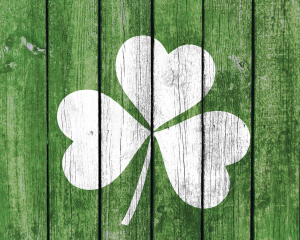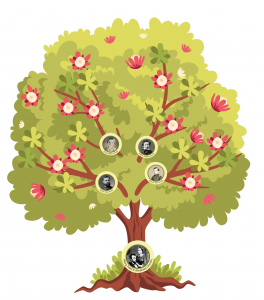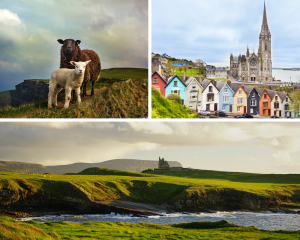St.Patrick’s Day: A Chance to Explore your Irish Roots and Ancestry. Culture and History of the Holiday

In this article, we’re looking into the history of the beloved St. Patrick’s Day as well as many ways of exploring your Irish roots. Erin go Bragh!
St. Patrick’s Day As An Inspiration To Explore Your Irish Roots

Everybody feels a bit Irish when they celebrate St. Patrick’s Day. And for a good reason – the holiday mood is so infectious, it’s hard to resist dressing in green and indulging in some beef with cabbage. Some may even get inspired to explore their Irish ancestry once they’re done dancing and feasting.
St. Patrick’s Day History
So what is St. Patrick’s Day? This holiday has been around for over a millennium, originating in Ireland as a religious celebration. On this day, the Irish commemorate the patron saint Patrick, who is credited with converting the locals to Christianity. The exact dates of Patrick’s life are unknown, but the general consensus is that served as a missionary during the fifth century. It’s also widely assumed that he died on March 17, and that’s when the most famous Irish day is celebrated.

Irish families would typically go to church in the morning and have celebrations in the afternoon. They would dance, drink, and feast on the traditional Irish dish of beef and cabbage when the meat-eating ban during Lent was lifted. The holiday would later spread to America as thousands of Irish immigrants from the 16th century onwards traveled across the ocean in search for better lives.
The first known St. Patrick’s Day parade supposedly took place in what is now St. Augustine, Florida in 1601. Over the next couple of centuries, interest in the St. Patrick’s Day parades in such major cities as Boston and New York City only rose. And with the modern era of globalization, St. Patrick’s day became a worldwide feast.
Recently, several cities have created their own customs – for example, the annual greening of the Chicago River. As city pollution-control workers used coloring to track unlawful sewage discharges in 1962, they realized that the green dye might also serve as a funny way of observing the holiday. In order to keep the river green for a week, 100 pounds of green vegetable dye were released into it that year. Today, only 40 pounds of dye are used, and the river turns green for just a few hours to limit environmental harm.
St. Patrick’s Day Symbols

Perhaps, one of the most well-known symbols of the holiday is the shamrock. According to legends, the flower had a significant role in St. Patrick’s teachings. He would explain the essence of the Holy Trinity using the plant’s solitary stem and three circular leaves as a simple, visual representation.
One other famous symbol is the leprechaun. Interestingly enough, from the perspective of Celtic mythos, leprechauns are considered rather minor characters. Although they are known to possess some magical powers, they mainly serve as shoe fixers to magical fairies. They are also renowned for their cunning, which they frequently employed to safeguard their mythical wealth.
Tips On Starting Your Family Research
There are many other ways to discover your Irish roots, but we’ve decided to cover the basics:
Reach Out To Family Members
Talking to your closest older relatives is one of the first steps of any genealogical research. Your parents and grandparents are invaluable sources of information and memories of your predecessors and your distant kin. Once you’ve covered that, you can start interviewing your uncles, aunts, and cousins.
And apart from just recollections, almost every family member will have a wealth of physical sources of information in their homes. Photo albums, scrapbooks, letters and other possessions that may have been stashed away in boxes for many years. So have a chat with your family and see what information you can uncover. If nothing else, they might point you in the direction of further information sources that you can investigate later.
Create A Family Tree

Once you’ve amassed some knowledge about your ancestors, you must figure out how to effectively store and visualize it. Making yourself a family tree is among the best methods, with numerous different versions available. Online family tree builders like Treemily offer such possibilities as inputting many kinds of text information, uploading photos and other media files or even printing out your creation. It’s a fantastic approach to present a concise summary of your family history that will grab everyone’s attention.
Exploring Irish Roots Beyond Genealogy
Studying your family doesn’t end with genealogical research, you can do it very casually.
Traveling

Plan your itinerary so that it includes locations significant to your family’s history if you’re traveling to a destination to reconnect with your ancestors. And if you have relatives that still live in Ireland, consider yourself lucky. Reaching out to relatives who still reside in those regions is the finest way to explore your Irish ancestry. It’s a good idea to get a second opinion if you have any doubts about some of the information you’d already dug up.
However, don’t worry, if there’s no one from your family left in Ireland. It’s likely that you can still get in touch with their ex-classmates, neighbors, or family friends. You can meet them for coffee and learn about the lives of your parents, grandparents, and other relatives when they were young.
Learning The Language
What better way to rekindle your connection to your roots than to study the language spoken by your ancestors? The Irish language is incredibly beautiful, albeit, far from easy. In fact, many locals worry about the state of the language, since fewer and fewer people can speak it properly.
The good thing is that you don’t necessarily have to take a class to learn the language. Language situation notwithstanding, a lot of Irish people are very passionate about their language and will do their best to teach you the fundamentals if you ask them. Learning a language through immersion is the most effective method, and speaking with locals can be a more rewarding experience than digging through Irish genealogical records.
Participating In Cultural Events
Become part of the Irish community by engaging in some of the biggest cultural events, and it doesn’t have to be just the most famous Irish celebration. Halloween, also locally known as Samhain Festival, was originally a major Celtic tradition. And it can easily make you feel connected to that culture if you put a bit of an Irish spin on it.
And if you find yourself in Dublin, don’t miss the Bloomsday Festival. It’s a celebration of the writings of James Joyce – one of Ireland’s most beloved authors. Scenes from his novel Ulysses are acted out all over the capital, with many people dressing up like Joyce or the characters from his books.
Conclusion
St. Patrick’s Day started out as a humble, local religious celebration and turned into a global phenomenon. In commemoration of the noble missionary that brought Christianity to Ireland, people from all across the globe dress like leprechauns, drink beer and dance away.
If St. Patrick’s Day is more than just a fun holiday to you, and you’d like to explore your Irish roots, don’t hesitate to visit Ireland, engage in conversations with locals, learn some Irish from them and join them in celebration of some important cultural events.
Finally, don’t forget to ask your family about your Irish ancestry and document your findings by building a family tree online.





